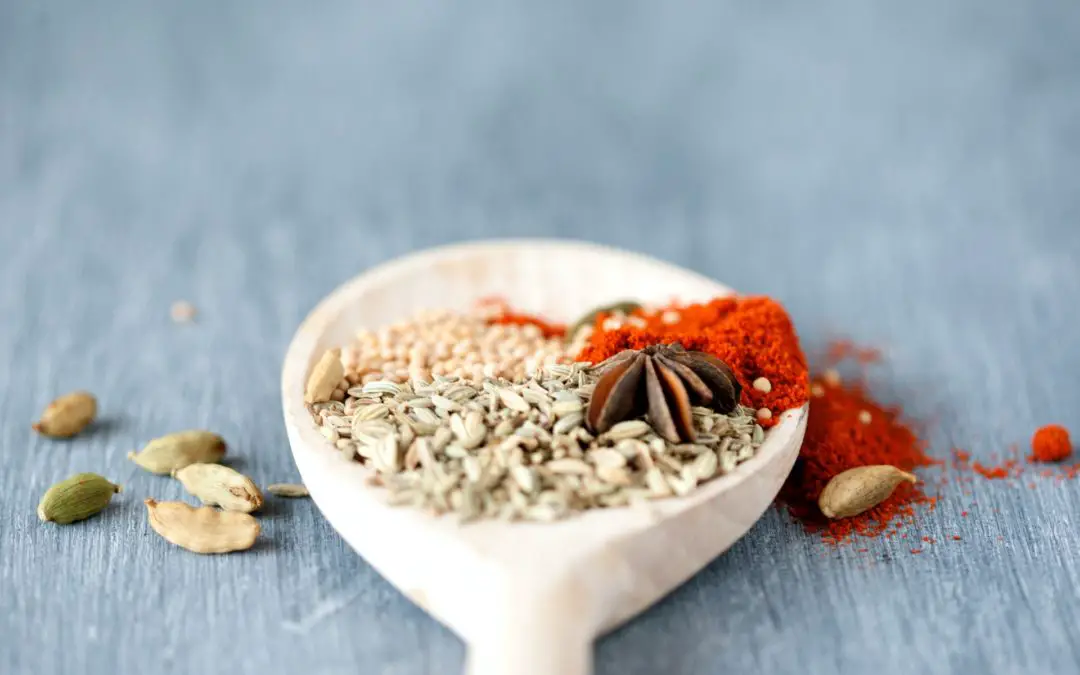When you’re first getting started with microgreens you’ll probably have the question:
Do you need special seeds for microgreens?
Microgreens don’t need special seeds. Look for seeds that are fresh, clean, and have been stored in a dry location out of reach of pests. Ensure the stems and leaves are edible, not all fruits and vegetables have edible microgreens (but most herbs do).
The only real difference between microgreen seeds and regular seeds, is price!
Just kidding!
Microgreen seeds generally do have higher quality control, and great attention to detail with storage and packaging. The last thing you want to do is put all the effort in to grow microgreens, only to find out you can’t eat them!
Let me guide you through some of the best practices when choosing microgreens seeds.
What are the Best Seeds for Microgreens?
Choose seeds for microgreens that:
- Are fresh: fresher seeds have higher germination rates. This means less mold and more even microgreen harvests.
- Taste great: There’s a microgreen for every palate, some microgreens are mild, some are strong, grow what you like!
- Color: Some microgreens are chosen for their brilliant red stems (amaranth), or unusual yellow color (corn shoots/popcorn). These make great garnishes, the colors really pop.
- Are clean: because microgreens are harvested so young, any residues (fertilizers, fungicides, pesticides) on the seeds are much more likely to make it into the end product (and on to your plate).
- Are edible: Some vegetable and most fruit seeds aren’t suitable for microgreens. Avoid plants from the nightshade family. If in doubt, don’t risk it.
Can You Use Regular Seeds for Microgreens?
Can you use regular seeds for microgreens? In most cases yes, you can use regular seeds for microgreens. There is nothing special about microgreen seeds.
When growing microgreens it’s the stage of growth and method of harvesting (more info on harvesting microgreens) that sets them apart.
One important point is to verify the vegetative growth is safe to eat. For example you can grow tomato seedlings, but the vegetative growth contains alkaloids including tomatine, which is toxic to humans.
If you’re in doubt whether a particular seed is safe to consume as microgreens, check with the seed supplier, or make a quick call to your municipal poison control center. If you don’t get a conclusive answer, grow something else.
Some key factors that you might consider when selecting seeds for microgreens:
- Storage: were the seeds stored in dry, pest-free conditions?
- Organic: many microgreen consumers prefer organic
- Non GMO: non genetically modified seeds are preferred by some
- Purity: removal of twigs, chaff and other harvesting debris
Can You Use Bird Seeds for Microgreens?
I’ve been asking myself this question.
And the answer is Yes, but with a few caveats.
You shouldn’t, if you have a choice. Bird seed can have additives, be stored on the ground and in unsanitary ways, and is likely lower quality seed in general.
Seeds can have a few problems that might not come to mind at first. It’s good to think back to the seed supply chain and then work forward. The best seeds are fresh seeds that are fully mature. In general the longer seeds are stored, and the further they travel, the lower the quality becomes. Let your imagination go wild.
Seeds for full-sized plants and commercial agriculture are important, but a slightly lower germination rate isn’t a big problem in a wide open field. The plants can breathe, and are seeded at much much lower densities, so bad seeds won’t contaminate their neighbors.
Bird Seed vs Sprouting or Microgreen Specific Seeds
Sprouting and microgreen seeds have a tighter supply chain. They’re generally processed and stored more carefully, so are likely to be a lot fresher, younger, and expected to germinate and grow more vigorously.
Bird seed can have vitamins and other additives that aren’t safe for human consumption. They can also be stored on wet floors in nurseries or warehouses, and generally in non food-safe conditions. Food safety is critical for sprouting seeds, but also for microgreens.
What Seeds Are Commonly Used for Microgreens?
Microgreens seeds usually come from one of three types of plants. Vegetables, herbs, and edible flowers. There’s some overlap, and there are some exceptions, but these are three convenient groupings.
Microgreen Vegetables (most microgreens are vegetables)
Microgreen vegetables refer to seed that can be grown to maturity and harvested as vegetables. Raddish and Broccoli are two very popular examples. But there’s no difference between Raddish microgreen seeds and regular microgreen seed (except maybe the price!)
Microgreen Herbs (some are herbs)
Popular examples of microgreens grown with herb seeds are cilantro and basil. They’re just harvested a little earlier than what you might see at the supermarket, but otherwise the seeds are the same.
Herbs make great microgreens because you’re already used to the flavours, and you know for sure they’re safe to eat. If a herb is edible, the slightly younger version (microgreen) is edible too.
Microgreen Flowers (some are edible flowers)
Flowers have a long history of being bred for different scents and flavours. Microgreen flowers include Borage, Celosia and Gem Marigold. The cool thing about edible flowers is that the same species is often available in multiple different flavours.
Sunflowers are one of the most popular microgreens flowers!
Dandelion too.
Marigold, Borage, and Celosia flowers are all edible as well. A note here: if you grow these plants from seed, it’s okay to eat the leaves and flowers. But, if you’re picking them up from the store it’s riskier. You don’t know what kinds of fertilizers, herbicides, and pesticides they’ve used on them.
It’s best to avoid store-bought unless they’re advertised as edible.
Microgreen Seed Mixes
Microgreen seeds are sold as pleasant combinations of complementary seeds. Sometimes it’s to build interesting flavors together. Or sometimes it’s to tone down a particularly strong peppery or garlic flavor.
Sprouting.com Offers the Following Blends
- Ancient Eastern blend: Contains Fenugreek, Lentils, Kamut, & Adzuki beans
- Broccoli Brassica Blend contains broccoli, broccoli raab, radish, mustard, arugula
- A blend of garbanzos (chickpeas), lentils, and peas
- Microgreen salad mix: A unique and wonderful blend of peas, fava beans, buckwheat and sunflower
- Spicy microgreen blend: Contains red mustard, arugula and cress.
- Spring salad mix: A blend of broccoli, radish, red clover, and alfalfa.
Check out these blends at sprouting.com.
Johnny’s Selected Seeds Offers the Following Seed Mixes
- Spicy Micro mix: A colorful blend of red and green mustards with various textures
- Radish, Confetti Mix: A vibrant, mildly spicy blend of purple and green radish leaves with red, purple, and pink stems.
- Chard and Beet, Rainbow Sprinkles Mix
- Kale, Kalefetti Mix
- Chard and Beet, Rainbow Sprinkles Mix
- Mild Micro Mix: This blend of mildly flavored brassicas contains mizuna, cabbage, kale, and kohlrabi
Find these seed mixes online at Johnny’s Selected Seeds.
True Leaf Seeds Microgreen Mixes
- Lettuce Gourmet Mix: This packet contains a mixture of favorite lettuce varieties from across the spectrum of lettuce types.
- Spicy Salad Mix: Includes: broccoli, kale, purple vienna kohlrabi, arugula, red acre cabbage, snowball cauliflower, southern giant mustard.
- Basic Salad Mix Contains: Broccoli, Kale, Kohlrabi, Arugula & Red Acre Cabbage. Choose Size.
- Nasturtium – Jewel Mix: Also known as Naturtium shoots, these greens are becoming a popular additiion to sushi since it has a similar spice to wasabi.
- Beet Seeds -Detroit Mix: Organic Detroit Mix Beet seeds are a mix of Detroit Dark Red Beet and Golden Detroit Beet seeds
- Lettuce gourmet mixture: This packet contains a mixture of favorite lettuce varieties from across the spectrum of lettuce types.
- Lettuce mixed greens Mesclun Mix: A wonderful collection of greens of differing color, texture and flavor, the mix includes: Arugula, Spinach, Swiss Chard, Endive, Kale, Mustards and Lettuces.
- Swiss Chard Rainbow Mixture: This is the best and most inexpensive choice as substitute for beets.
Check out the above seed mixes and more at True Leaf Seeds online.
What seeds are not recommended for microgreens?
The number one piece of advice I can give, is to make sure the seedlings are edible. Not all plants are edible. And not all fruit and vegetable plants have edible vegetation.
Lettuces: It can be done but it’s challenging, very tender leaves, easy to bruise and wilting is a problem
Many fruit plants aren’t suitable for microgreens., just because the fruit is tasty, doesn’t mean the vegetative growth is. Blueberries, apples, and oranges are great examples of tasty fruit that have unpleasant seedlings that are not suitable for microgreens.
The other major category to watch out for (do not grow as microgreens) is the nightshade family.
- Tomatos
- potatoes
- bell peppers
- hot peppers
- eggplant
- goji berries
And there are many more.
If you’re in doubt, don’t risk it!

I’m Alex Lafreniere. I learned a lot about plants when I built and operated a landscaping company. But, there’s always more to learn. Ever since travelling across the world, I’ve wanted to find ways to bring more tropical and exotic plants into my life. This is the site where I share everything I’ve learned with you.
This site is owned and operated by Plant Hardware, a sole proprietor headquartered in Calgary, Canada. Plant Hardware is a participant in the Amazon Services LLC Associates Program, an affiliate advertising program designed to provide a means for sites to earn advertising fees by advertising and linking to Amazon.com.Plant Hardware may also participate in affiliate programs with Bluehost, Clickbank, CJ, ShareASale, and other sites. Plant Hardware is compensated for referring traffic and business to these companies.

